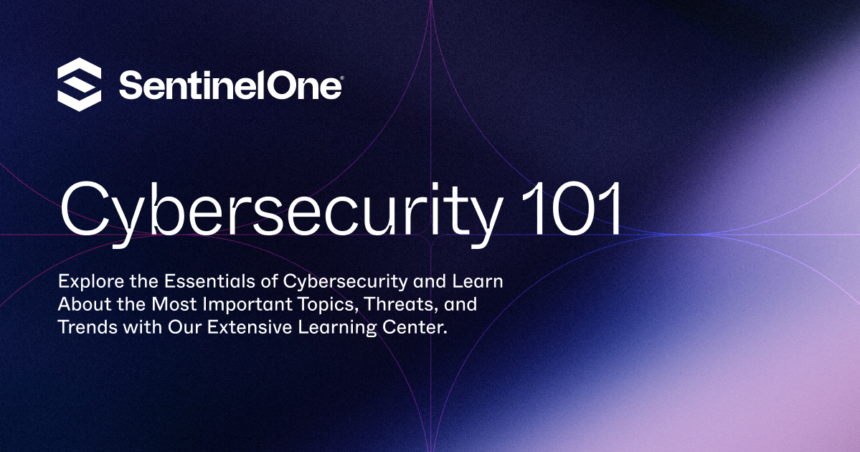SIEM is used for logging and detecting security incidents whereas SOAR is for automating responses. This article explores the different yet complementary roles played by SIEM and SOAR.
SIEM or Security Information and Event Management is a system for identifying and escalating security incidents taking place anywhere across a network. SIEM collects data from various sources and correlates them to recognize patterns that indicate anomalies. SOAR or Security Orchestration, Automation, and Response plays a role that is complementary to that of SIEM. It automates incident response after an alert is raised.
In this article, we will conduct a detailed SIEM vs SOAR comparison, understanding the key differences between the two in terms of functionality, use cases, and importance. We will also explore how the SIEM and SOAR systems can work in tandem to build a strong cyber defense framework.
SIEM is a security solution that combines security information management (SIM) and security event management (SEM) to create granular visibility into an organization’s software systems.
SIEM is capable of collecting event log data from a wide range of sources and crunching it to detect and analyze anomalies in real time and trigger appropriate action. SIEM collects vast amounts of security information and event data servers, firewalls, applications, etc.
It then conducts data analysis using complex algorithms and correlation rules to identify deviations from usual patterns that indicate security threats. Once a threat is detected, the SIEM system raises an alert so the security team can respond quickly.
The Security Information and Event Management (SIEM) solutions work like a security watchtower with the primary function of early detection of potential security threats. The key features of SIEM highlight this very function.
SOAR is a set of services that coordinates and automates threat prevention and incident response. It has three primary components: orchestration, automation, and incident response.
Orchestration refers to establishing connections between internal and external security tools including out-of-the-box tools and custom integrations. It allows organizations to deal with their growing inventory of security tools and third-party integrations.
Automation sets up playbooks and workflows that are triggered by an incident or a rule. This can be used to manage alerts and set up responsive actions. While it is extremely difficult to employ end-to-end security automation, with a little human intervention, a lot of tasks can be automated.
The first two components lay the foundation for rapid incident response.
The global mean time to detect (MTTD) a security breach is around 200 days and the mean time to recover (MTTR) is around 40 days. The primary goal of the SOAR technology is to reduce both MTTD and MTTR which in turn can reduce the overall impact of an attack on a business. The key features of SOAR are tuned towards this goal.
SIEM and SOAR play complementary roles in cybersecurity. SIEM is good for finding threat indications by analyzing security event data from across an organization’s infrastructure, whereas SOAR is more action-oriented. It focuses on responding to security alerts and triggering remedial action.
Both are responsible for detecting threats and mounting responses; the scale at which they work, the sources used by the tools, and the overall impact are the distinguishing factors. In this section, we’ll discuss those factors.
Security Information and Event Management (SIEM) is the process of collecting security event data, correlating events, and recognizing patterns that indicate anomalous activity. It offers deep insights into an organization’s security posture.
The primary focus of Security Orchestration, Automation, and Response (SOAR) platforms is on automating and orchestrating incident response processes. SOAR enables security teams to reduce response time to security incidents and threats.
SIEM uses automation for collecting and analyzing vast amounts of data as well as pattern recognition.
SOAR enables the automation of rule-based remedial actions to ensure rapid incident response.
SIEM has limited incident response capabilities. As discussed earlier, its primary function is raising alerts, and it relies on security professionals to assess the threats and take necessary action.
SOAR plays a more hands-on role when it comes to incident response. It uses predefined playbooks to expedite remedial action based on security alerts collected from various tools.
SIEM collects raw data from sources across the infrastructure including logs from firewalls, servers, network devices, and applications.
SOAR, unlike SIEM, doesn’t collect raw data. It focuses on collecting processed security data from SIEM and other security tools.
SIEM is a technology focused on the detection of security incidents. It can raise security alerts with relevant insights for security professionals. As far as response and remediation is concerned, SIEM almost completely relies on knowledge workers.
SOAR is focused on automating incident response. Its main outcome is a reduction in both MTTD and MTTR.
SIEM requires a large up-front investment to fund the infrastructure required to process vast amounts of data. Ongoing costs may include licensing, storage, and hardware maintenance. Businesses may find it difficult and cost-intensive to scale the SIEM system as the enterprise grows.
SOAR systems often operate as Software-as-a-Service (SAAS) with subscription-based models. For instance, a business using SentinelOne’s AI-powered security automation platform doesn’t need to worry about building a robust security infrastructure from scratch. It reduces costs and makes scaling up easy.
SIEM is suitable for an organization trying to build a robust, in-house security foundation that can analyze vast amounts of security data to identify potential threats. SOAR is more suitable for an organization with a mature security program that is trying to increase efficiency by automating various security tasks. So, how does a company make the right choice between SIEM vs SOAR?
The important thing to understand here is that SIEM and SOAR perform complementary tasks in an organization. SIEM works like a fire alarm while SOAR works like a firefighting unit – the former is good for continuous monitoring and threat detection and the latter for rapid response.
If a company has an SIEM that detects anomalous network behavior, every time it detects an anomaly — a sudden spike in data traffic, for instance — it raises an alarm for the security team. Now, the security leadership has to allocate someone to the specific issue to investigate and remediate.
But if it’s a false positive, the assignee would waste valuable time. When there are a lot of alerts coming through, it becomes imperative to avoid false positives, and automate routine tasks, or else, a company risks losing sight of the most critical issues. That’s where SOAR comes in.
SOAR can integrate data from multiple security systems, and run automations to investigate, prioritize, and remediate certain issues.
This ensures two things: 1. Incidents are looked at and attended to much faster. 2. Security professionals can focus on the issues that truly require expert attention, the rest is taken care of with logical playbooks.
A good way of looking at the SOAR vs SIEM comparison is to perceive the SOAR capabilities as an augmentation for SIEM.
Consolidating SIEM and SOAR can be a great strategic move for businesses trying to strengthen their security posture and scale their security operations. SIEM allows a unified view of the security landscape while SOAR enables streamlined incident response and increased efficiency through automation and AI usage. This consolidation allows security teams to detect threats faster and respond with better effect.
Security admins can configure SOAR to perform routine compliance checks automatically. These may include the verification of firewall rules, password policies, or patch management status.
You need a way of empowering your existing security framework with the speed and autonomy of artificial intelligence. Leaders must think beyond SIEM vs SOAR and embrace a consolidated approach that focuses on strengthening the SOC (Security Operations Center).
You must choose a vendor with a proven track record, deep expertise, and a vision for the future. It serves you, in the long run, to partner with an organization that’s focused on meeting your current security needs but also making strides to defend against potential challenges of the future like more sophisticated malware attacks, high-quality phishing, more powerful DDoS attacks, and eventually, attacks powered by quantum computing.
The AI SIEM built on SentinelOne Singularity™ Data Lake is the perfect platform for organizations trying to build an autonomous SOC with granular visibility, rapid response, and efficient resource management.
SentinelOne can transform your legacy SIEM and enable a transition into the future with the power of artificial intelligence.
Here’s what you get:
You can secure everything – endpoint, cloud, network, identity, email, and more. You can ingest first-party and third-party data from any source and in any format – structured or unstructured.
In the end, the goals you can achieve with AI SIEM by SentinelOne are:
That’s everything you want from your security platform and it also ends the SIEM vs SOAR debate by integrating SOAR capabilities into an AI-Powered SIEM.
With this article, we have built a high-level understanding of how SIEM and SOAR work. We have also discovered that the SIEM vs SOAR debate ends with a perfect consolidation of both of them in a platform like SentinelOne’s AI SIEM.
A combination of SIEM and SOAR creates the balance that an organization needs and with the mentioned use cases we hope that you have formed a vision for your organization based on your specific business needs.
Yes, SOAR can work independently of SIEM. While SIEM works as a major source of data for SOAR, it can ingest security information from security tools like Endpoint Detection and Response (EDR) systems to function.
No, SIEM or SOAR cannot replace each other. These technologies have different functions. While SIEM is focused on data collection, correlation, and analysis, SOAR deals with automated incident response and security orchestration. They cannot fully replace each other’s roles.
The time required to implement either SIEM or SOAR depends on the size of the organization under consideration and the complexity of its IT infrastructure. Depending on the size of the organization, implementing SIEM can take 8-10 months. SOAR requires a shorter period ( 3-6 months) since it doesn’t involve building data infrastructure.
SOAR stands for Security Orchestration, Automation and Response. As the name suggests, SOAR orchestrates security procedures and establishes centralized control over security alerts. It also automates incident response procedures through rule-based playbooks and AI-powered actions.
SIEM collects, correlates, and analyzes security data.
SOAR automates incident response and orchestrates security instruments. XDR or Extended Detection and Response, expands the scope of threat detection beyond Endpoints and focuses on advanced threat hunting.
EDR or Endpoint Detection and Response performs threat detection on endpoints. SIEM collects security event data and correlates them to identify potential threats. SOAR is a security solution for reducing the meantime to detect and respond to threats through automation and orchestration of security procedures.



